If Summer was ‘Brat Girl Summer’, then arguably Autumn is ‘Brambly Hedge Autumn’ - or at least, that’s how I see it.
It’s fair to say that Brambly Hedge is having a pop culture moment. I see constant references to it all over social media but then again, maybe that’s just my algorithm.
I was first introduced to the series during my own 1980s childhood. Growing up in the English countryside, the bucolic images were all too easy to imagine. The series was comforting and, for a child who spent a lot of time in the world of make-believe, I loved imagining a hidden world of anthropomorphic field mice in the forests and fields near my house.
Fast-forward 30ish years and I am fully immersed in the world of Brambly Hedge once more. Maybe it’s because I’ve just moved back to the small English village that I grew up in after 10 years of expat city life. Or maybe it’s because like many millennials, I’m craving a slower pace of life.
But what is it exactly that makes Brambly Hedge so appealing? I’ve recently re-read all of the stories to my children and here are my personal thoughts.
Wholesome Storytelling
The stories themselves are very gentle. Slightly longer than the average children’s book, they make an ideal transition for young children who are not quite ready for chapter books.
My 8 year-old daughter likes to re-read the series in between longer novels, sometimes opting for a short Brambly Hedge story as a way to decompress after school. The stories act like an insight into family life in a countryside community, focusing on events such as the harvest or seasonal celebrations.
The Brambly Hedge stories have gone hand-in-hand with my own children’s storytelling during play. I often find them recreating the Brambly Hedge world with Maileg mice. And if that all sounds a little tooth-achingly sweet, then you probably should check out my original Substack How I drink my coffee hot for my insights into play-based learning.
In the world of Brambly Hedge, there is very little threat. Or at least, nothing truly terrifying. When the young mouse Primrose goes missing in Autumn Story, we know that everything will work out in the end. The same can be said for The High Hills and Sea Story where any mishaps are short-lived. When we compare these mice to the ones in other stories, The Gruffalo for example, they live a very genteel life that is comforting.
Ultimately, if you’re having a bad day or modern life is getting a little crazy, reading a Brambly Hedge book is the ideal antidote.
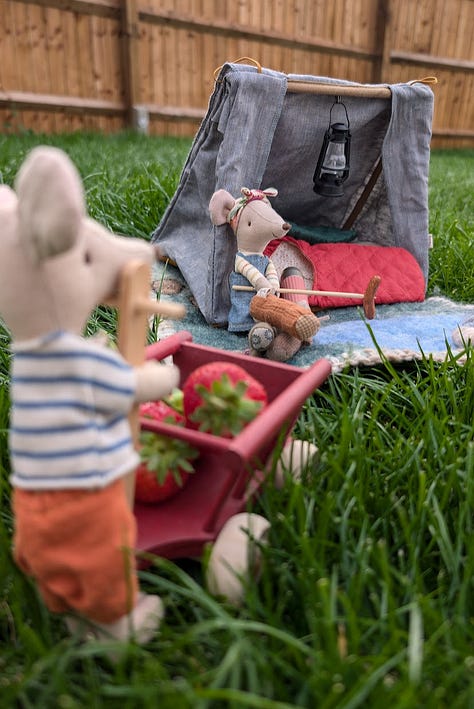
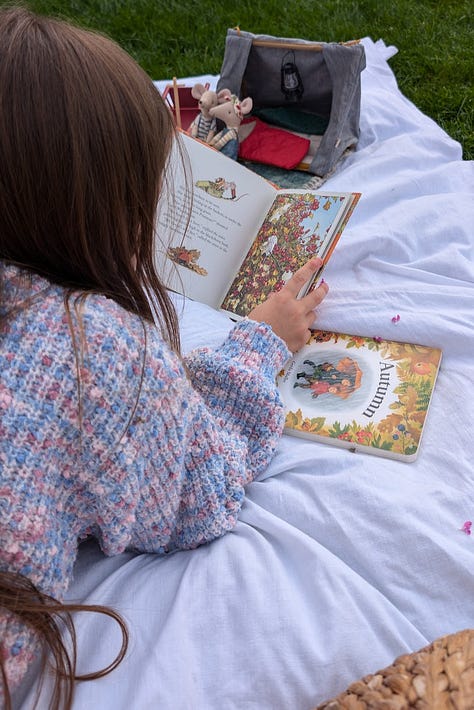

Gorgeous Illustrations
In my opinion, the quality of Jill Barklem’s illustrations far surpasses most children’s books available today. The illustrations are incredibly detailed and it’s all too easy to find yourself immersed in the world of Brambly Hedge mice.
Every time I read the series to my own children, I find myself discovering new details. Brambly Hedge is a series that you don’t rush through. There are no quick turns of the page or skipping over the illustrations in favour of the written text.
The illustrations are cosy and, despite being written in the 1980s, are more evocative of Edwardian era England. The Edwardian era itself has often been viewed as the period when childhood was invented1. There certainly was a proliferation of children’s writers during that period including Lewis Carroll, JM Barrie and Beatrix Potter. It leaves me wondering if the illustrations themselves were a nod to that specific time period and it’s connections with childhood ideals.
I also love that these illustrations put a certain expectation on the reader. There is no assumption that the audience needs a very basic drawing in primary colours. In the world of Brambly Hedge, the illustrations are just as important as the story.
It isn’t just the quality of illustrations but the research that went into each page. The attention to detail visible in the homes of the mice, the food and festivals helps us to feel fully immersed in the world of the Brambly Hedge mice.
In a The Guardian article from 2023, Jill Barklem’s son, Peter, states:
‘One of the wonderful things about Mum’s books is that you can take them out into green spaces and observe the leaves and flowers in front of you in the same way that they appear on the pages, such was the accuracy of her research and the detail of her illustrations’
‘Jill Barklem’s family find tree that inspired her Brambly Hedge tales’ by Sarah Shaffi 4/04/23

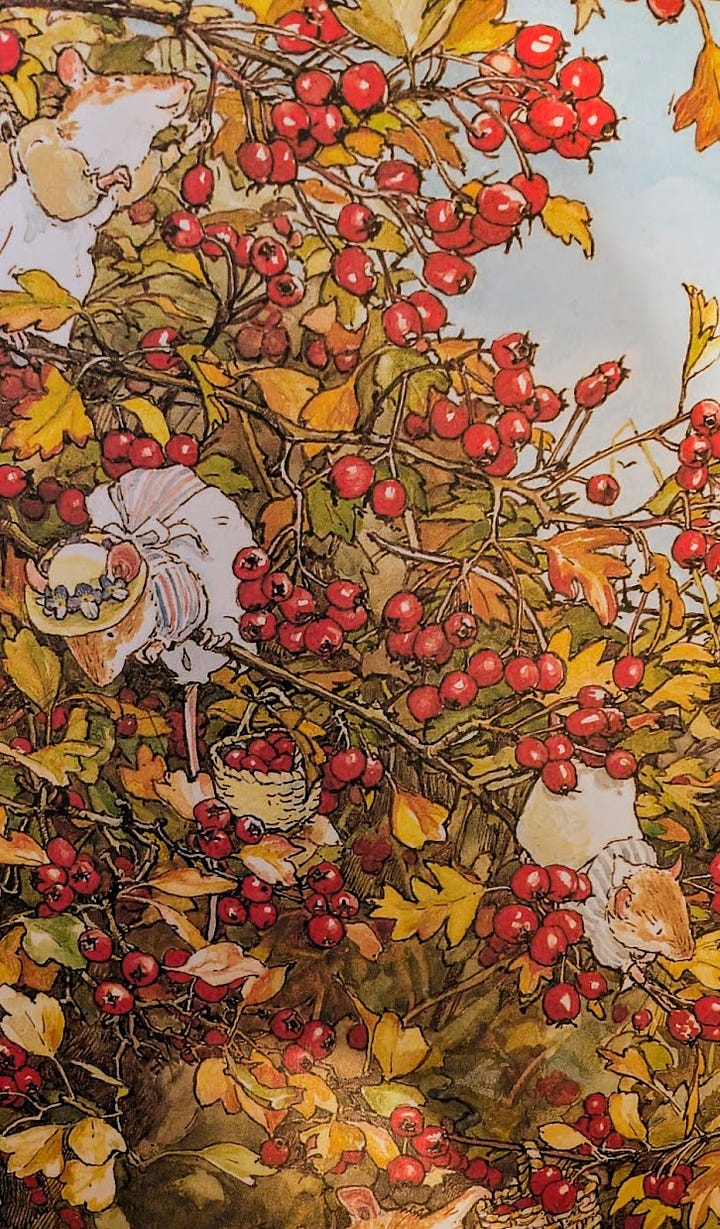


Celebrating the Changing Seasons
I’ve long been a believer in seasonal rhythms. Celebrating each season as it comes has helped both me and my family to enjoy life year-round. We aren’t just waiting out for Christmas or the summer holidays. When you adopt a seasonal approach to life, there is more to look forward to.
And so for me, one of the biggest appeals of Brambly Hedge is the focus on seasonal events. The original 4 books (Spring, Summer, Autumn, Winter), each give us insight into life and celebrations during the seasons.
As an outdoorsy family, we love to spot Brambly Hedge in the real world as the seasons change. It makes us more aware and mindful of the natural world that surrounds us. The children love to compare the real-world blackberry bushes and apple trees we see out in the countryside to those in Brambly Hedge. It’s fair to say that the series has also inspired us to make more homemade pies, cakes and crumbles too!
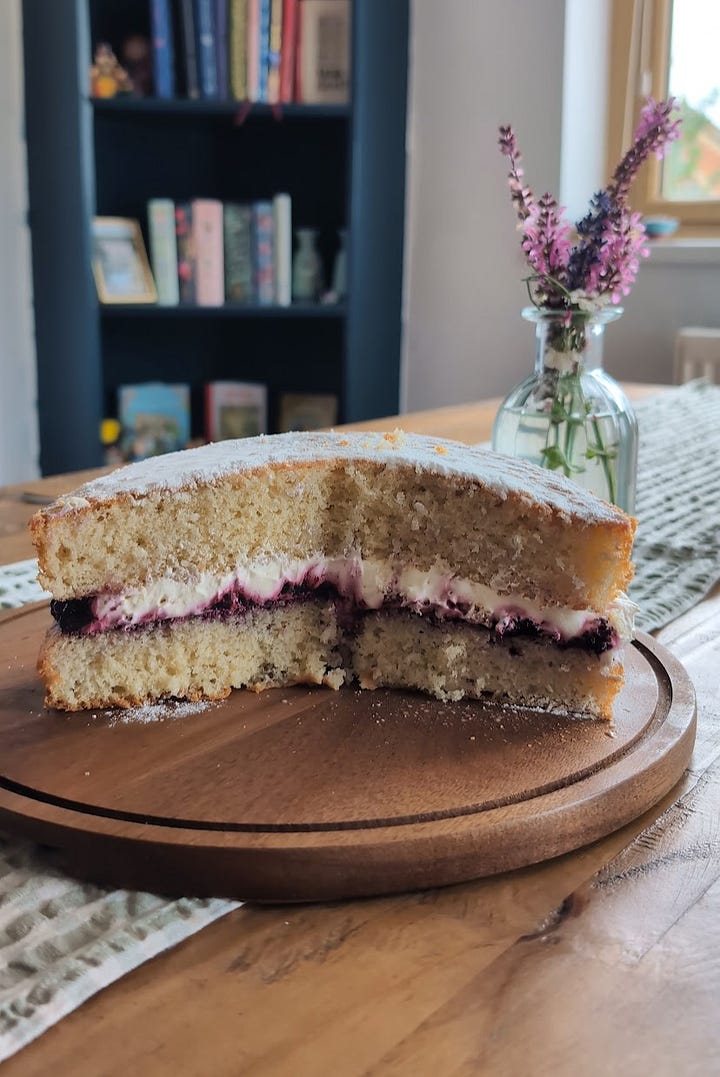
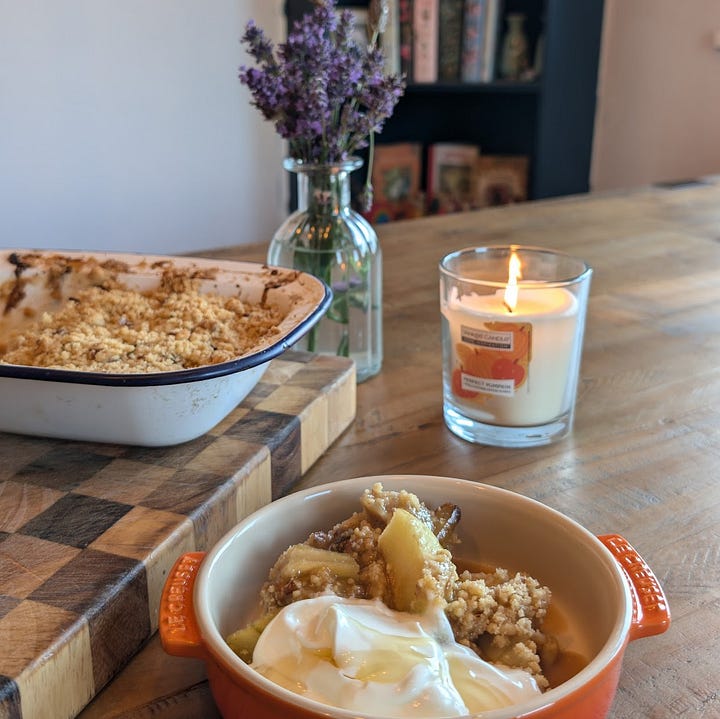
Share your thoughts!
Do you love Brambly Hedge? I’d love to hear your thoughts…
https://www.nts.org.uk/stories/the-invention-of-childhood



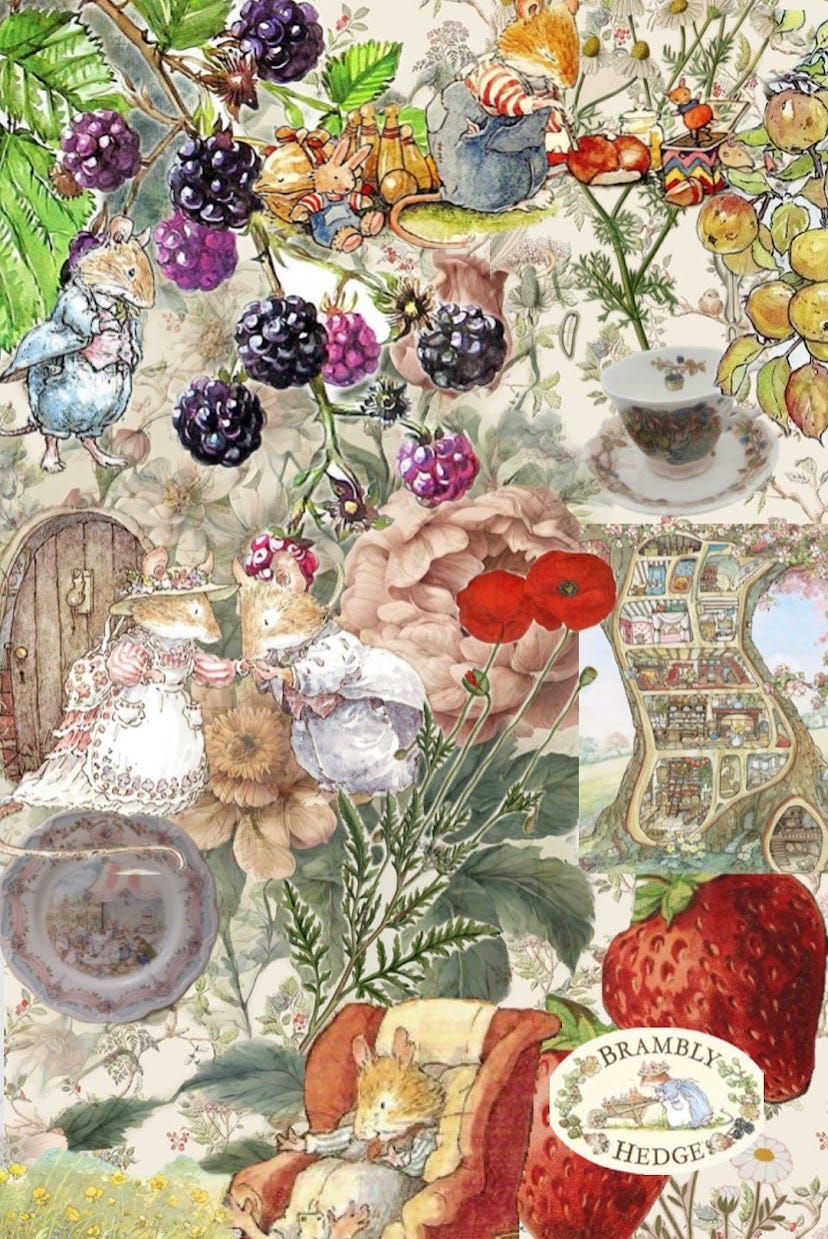

Yes we love these! I bought the complete book off vinted for a couple of pounds. My son loves it! He turns 4 in January and I was surprised how much he picks this book up. He reads it in his room to his teddies in the morning. Such a cosy sit down book which we will favourite for a very long time
I have never read these but they sound like something I would really enjoy! I have also seen lots of the illustrations on social media recently. Beautiful, intricate illustrations to spend time over.
My library only has The Winter Story listed - I will request they purchase the others so they are available for more to discover and enjoy.